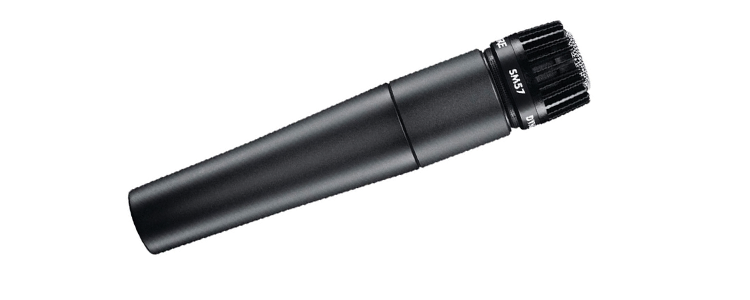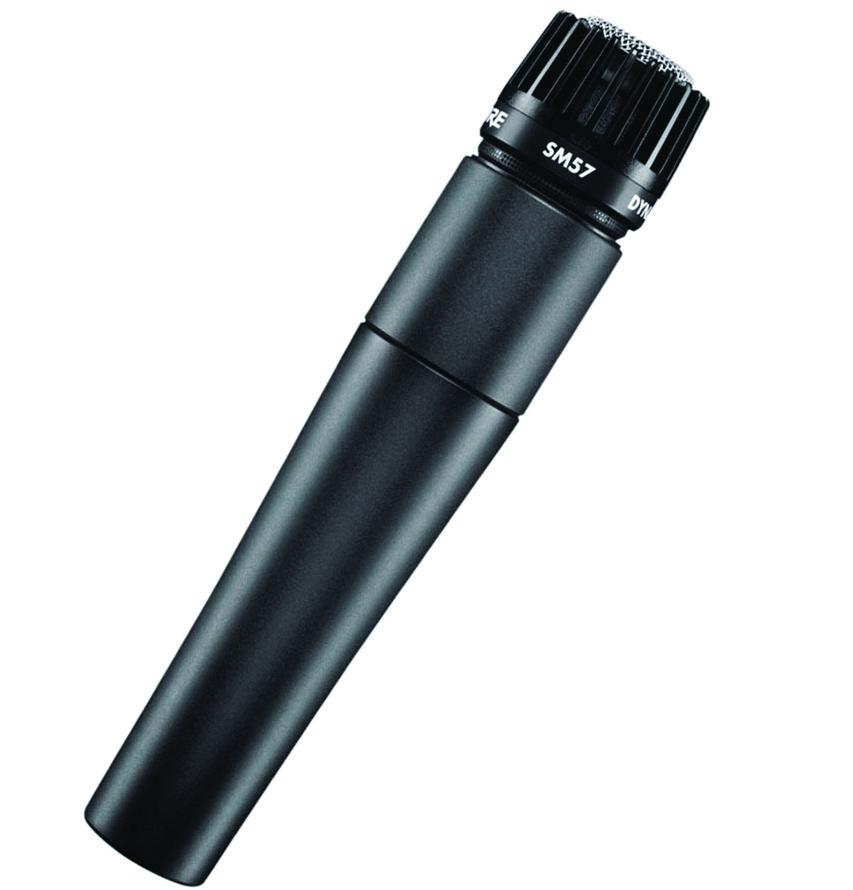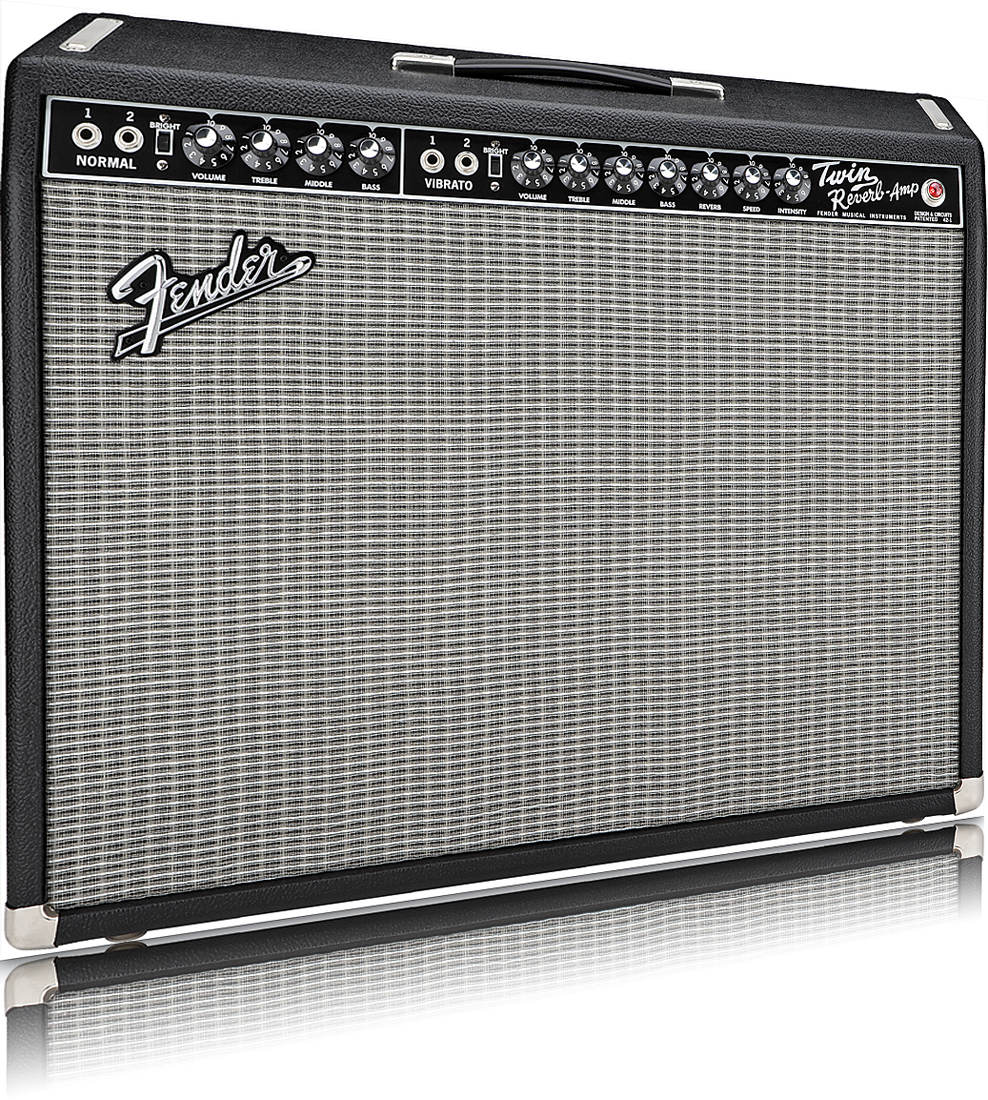Twenty Instrument Mic’ing Tips
It’s the most vital technique to master, as capturing a great sound is key to producing a top-notch mix. Get the inside track with our essential advice… 1: Acoustic Guitar Positioning: A good starting place for recording acoustic guitars is to use a cardioid mic placed around 40cm from the guitar, firing at the join […]

It’s the most vital technique to master, as capturing a great sound is key to producing a top-notch mix. Get the inside track with our essential advice…

1: Acoustic Guitar Positioning: A good starting place for recording acoustic guitars is to use a cardioid mic placed around 40cm from the guitar, firing at the join of the neck and body. This usually offers a good, well-balanced sound, and though it captures some of the power coming from the sound hole it doesn’t dominate the signal. With any live recording, experiment with moving the mic around to see what works best for your particular situation.
As a general rule, moving the mic gradually further up the neck will increase the high frequencies captured and lessen the bottom end, whereas moving the mic closer to the sound hole will add warmth and depth if your sound is overly bright. Moving the mic further away from the guitar will create more ambience but perhaps at the risk of losing some definition. Placing the mic closer to the guitar will create a more intimate and dry sound.
Getting your amp off the floor will eliminate unwanted dirt (above).
2: Raise Your Amps Up: It can be a good idea where possible to place combo amps on a chair or a stand to isolate them from the floor, as this will result in a cleaner sound. Also try placing amps away from walls or the corners of rooms, as this tends to reduce the likelihood of a booming effect that will be picked up by the mic and colour the signal. If you’re dealing with amp cabs and heads they’re usually too big to place on top of something, though you could consider a couple of crates, like you sometimes use at gigs to raise amps up to direct more sound at the crowd.
If the space you are recording in isn’t perfect you can try boxing the amp and mic in using sofa cushions or, at a pinch, a duvet. This will have the effect of creating a kind of acoustic shielding that should remove unwanted room ambience from the recording if you are having problems with reflections.

More mics for a cleaner sound, or fewer for a trashier one (right).
3: Less is Sometimes More: Drums are probably the most technically difficult of all instruments to record properly, but your approach should reflect what you’re trying to achieve. A slick pop record might well call for upwards of ten drum mics, lots of ambient room mics and so on, but a more lo-fi kind of garage guitar track might sound better with just a few well-placed microphones picking up a grungier sound.
This also means fewer drum tracks to juggle in the mix, though also less overall control of the drum sound. Bleed is something that some producers get obsessed with and it can be lessened by using very directional mics, though you’re always likely to get some signal leaking between them.
Bleed can be minimised through careful placement and also reduced using EQ after recording, but it’s usually not a huge problem if a little signal has bled between some of your drum mics. Piano, man…
4: Piano, Man: Recording an acoustic piano can be particularly tricky and you will almost always want two microphones to capture the full range of the instrument: one nearer the bass end of the body, and one nearer the top.
For an upright piano you will probably need to open the top lid, but if you remove the front panel entirely you should be aware that this dramatically alters the way the air resonates and fundamentally changes the sound of the piano – even though this can sometimes be an interesting effect to go for.
You may want to angle two mics in from above, or place one near the ear level of the player so the sound they’re hearing is what gets captured. Some people even place a mic around the back of the piano for a slightly different effect.

Recording from a little further away captures a similar sound to that which the listener hears
5: Strings Attached: When you record any kind of stringed instrument such as a violin or cello, think about where the sound is actually being generated. In the case of smaller instruments such as the violin, the strings and sound holes are facing upwards, so it’s best to angle a mic from slightly above, adjusting the distance from the player to control the balance of direct sound and room ambience.
A cello is played at a different angle so you will find that pointing the mic more or less at 90° towards the bridge should capture it pretty accurately.
As ever, close mic’ing will give a more intense and intimate feel, and moving back a little will soften things. You can even try recording strings with stereo mics for a little more flexibility at the mix stage. To get a better ensemble effect when recording several players, try a few mics placed in more ambient positions a little further away.

Mic positioning can be crucial when recording guitar amplifiers
6: It’s All In The Positioning: A mic pointed at the centre of a speaker will give you a brighter sound, and moving towards the edge smooths it off and introduces more bass. Distance will affect the presence and so on. Mics positioned closer to the floor will generally provide a bit more low end.
Close mic’ing an amp is the most common technique for capturing a harder, rockier guitar tone when the mic points straight at the speaker. Moved off centre, the tone softens a little.
You can also try adding a second, ambient mic that you blend with the first, moving each around until you hit the precise spot that works for you. Any phasing problems should become apparent as you monitor.
7: How Low Can You Go?: Recording bass is much the same in terms of technique as recording guitars, with the possible exception that you would never really record bass amps in stereo because bass almost always has to sit at the centre of the stereo field.
Another thing to bear in mind is that a lot of general purpose mics have a bass roll-off built in to deal with the proximity effect caused by close mic’ing vocals and some other sources. This can result in reduced bass capture, which you don’t want if you’re trying to get a nice deep sound.
If it’s switchable you can always turn this off but it can be a good idea to use either a non-vocal dynamic mic that has a flat low-end response or a dedicated bass or kick drum microphone, positioning it around 6-12in in front of the speaker in the cabinet.

Use multiple microphones for more options
8: Use Mics and Pickups: If you want a close mic’ed acoustic guitar sound but also some room ambience you could either try an omni pattern mic, or using two separate mics, one placed close by and one further away (being sure to listen for phasing problems).
Mono mic’ing is often sufficient for many tracks, but it’s not the only option you have. Positioning a single mic correctly is fine, but having two mics in different places sometimes gives you greater flexibility when it comes to mixing. The DI’ed sound produced by piezo pickups captures only the sound of the strings, very little of the body and none of the room, and so tends to result in an unnatural-sounding recording.
But recording it won’t affect the mic’d signal and it costs nothing to record an extra audio track. In some situations, blending a little of this signal with the mic recording can add weight and body when balanced correctly. At the very worst, you can just not use it if it doesn’t sound good.
9: The Challenges Of Playing Together: If you are recording multiple musicians in a single space, bleed can become a real issue. A bit of hi-hat leaking into the tom mic isn’t a huge problem but lead guitar getting into the bass recording definitely is. And while you can fix some of this stuff in the mix with EQ and gating it’s better to try and stop it happening in the first place.
Sometimes, recording everyone separately really kills the vibe of a track, so it’s better to record people at the same time if you can. Your drummer should ideally have some kind of isolation from other players since drums are so loud. One tip for guitars is to place amps in a different room, mic them up and then feed the signal to the player through headphones.
This way the sound gets captured accurately and the guitarist can play with feeling, but there’s little or no bleed in the room itself.

When an amp has more than one cone, remember that its sound may vary between cones
10: The Quirks of Amps and Speakers: On a multi-speaker guitar cab not every cone will sound the same. Some are different sizes, or there may be some stereo effects in use that are modulating the way that signal is directed to different cones.
If you are able, set up several mics 3-6in from the grille of the speaker. Then, listen to them at a sensible volume and audition each one. Ideally you would want to have someone to move the mics for you until you find the best position for the microphone you end up choosing.
If you don’t have an assistant then put the guitar in the headphone mix, crank it up, stand in front of the amp and move the mics until you get the right sound. This is all much easier, of course, if you have someone to play guitar while you arrange the mics.
